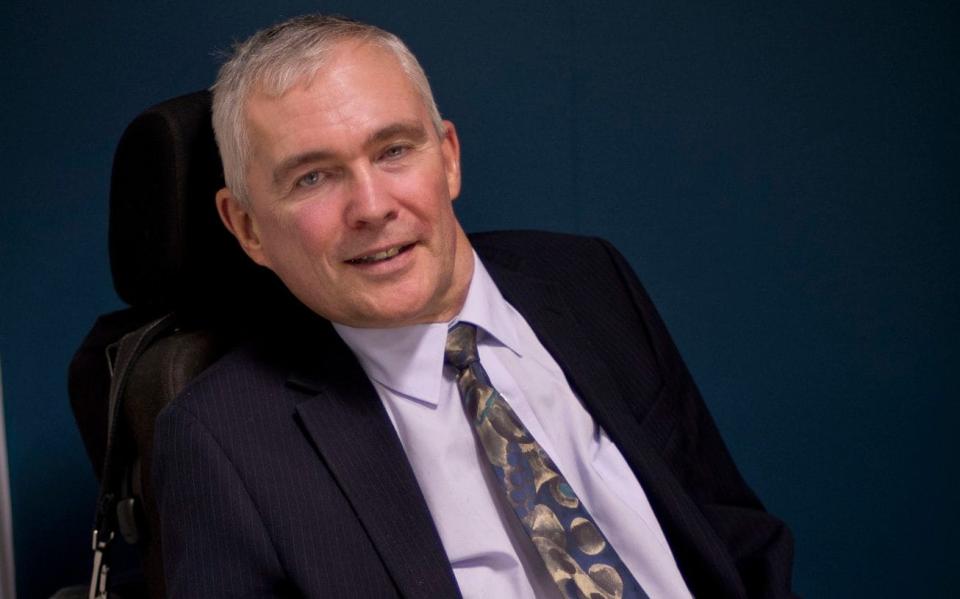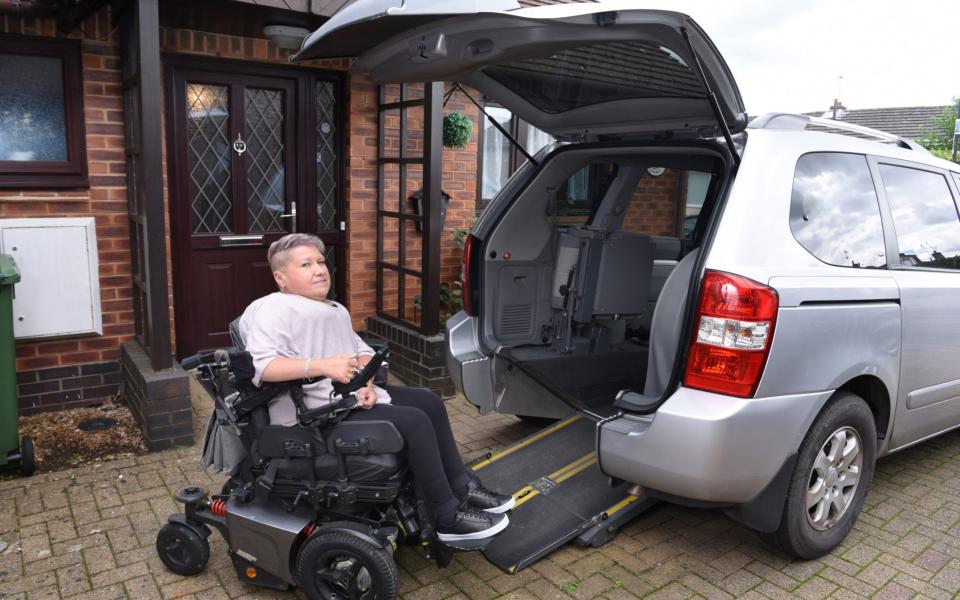Highways England accused of failing to consider perils faced by disabled people during breakdown

Highways England has been accused of failing to consider the perils faced by disabled people unable to escape their car if it breaks down amid fast moving traffic on a live smart motorway lane, The Telegraph can reveal.
Disability campaigners are backing a legal challenge claiming motorways without hard shoulders breach the Equality Act by discriminating against wheelchair users.
Claire Mercer, whose husband Jason was killed when he failed to reach an emergency refuge area (ERA) on the M1, is seeking a judicial review into the safety of smart motorways.
But, numerous wheelchair users petrified of breaking down because they would struggle to get out of specially adapted cars have contacted her.
Many fear if they did get out - often on a ramp at the rear - they could not clamber to safety over barriers.
And, carers who drive these modified cars have warned they cannot leave the car on the passenger’s side because the wheelchair is in the way, forcing them into the path of cars swerving to avoid their stranded vehicle.
While able-bodied motorists who fail to reach ERAs in a breakdown are advised to get out the nearside door and wait behind the barrier if safe to do so, wheelchair users are essentially told to stay buckled up, hazard lights on, call 999 and await help.
It takes an average of 17 minutes for Highways England to spot breakdowns on CCTV before closing the lane. Around 26 such breakdowns happen each day.

Dr Stephen Duckworth OBE, governor of Motability, a charity helping disabled people obtain cars, said he recently broke down on a conventional motorway where his driver helped him out of the specially adapted car for his electric wheelchair on the hard shoulder.
“If the same were to happen on a smart motorway, I wouldn't have stood a chance,” he said.
“The absence of a hard shoulder has resulted in me being more anxious on smart motorways which has adversely affected my social life. I feel like my rights have been infringed upon."
Kamran Mallick, chief executive of Disability Rights UK, said he had “personal concerns” about smart motorways, and explained “not being able to get out is frightening” if stuck in a live lane.
Dr Lisa Cameron, chair of the all-party parliamentary group for disability, said the removal of the hard shoulder on smart motorways was a “death trap for disabled people”, adding: “The insurmountable difficulty many disabled people face in reaching a safe refuge area was clearly not taken into account or given sufficient attention when smart motorways were designed.”

James Taylor, from the disability charity Scope, said safety was critical for the one million disabled motorists in the UK for whom driving offers independence.
“Disabled people have a right to be able to travel safely with assurance that if they were to break down they would be able to keep safe when seeking assistance.
“Highways England must not forget the needs of disabled people.”
Clare Gray, a disability advocacy advisor who suffers from spinal muscular atrophy and has limited movement, said it takes five minutes to lower the rear ramp, open the back and move her electric wheelchair out of her WAV - wheelchair accessible vehicle.
“Once out there is no safe place for me to go as I can’t get over the barrier. If I remain in the car and someone didn’t stop in time, I won’t ever be getting out. I know many disabled people are worried about this. ”

Helen Smith, a human rights lawyer at Irwin Mitchell who is representing Mrs Mercer, said her legal team was “concerned” disabled drivers may not get out of their car in live lane breakdown.
“There may be a potential breach of the Equalities Act if sufficient safeguards are not put in place on smart motorways, and this aspect is being investigated further.”
A Highways England spokesman said: "We are committed to meeting the needs of disabled road users," it said. "All our roads are built in line with disability legislation and we have worked with Disabled Motoring UK to provide advice specifically for disabled people. This is in addition to the advice in the Highway Code.
"We continually review our public information to ensure it is as up to date and comprehensive as possible and are preparing a new extensive campaign to help drivers feel and be even safer on all of our roads including smart motorways.”
In 2009, the company, whose sole shareholder is the transport secretary, carried out two years’ work on the A1(M) Hatfield Tunnel, in part to meet the Disability Discrimination Act requirements.

 Yahoo News
Yahoo News 
